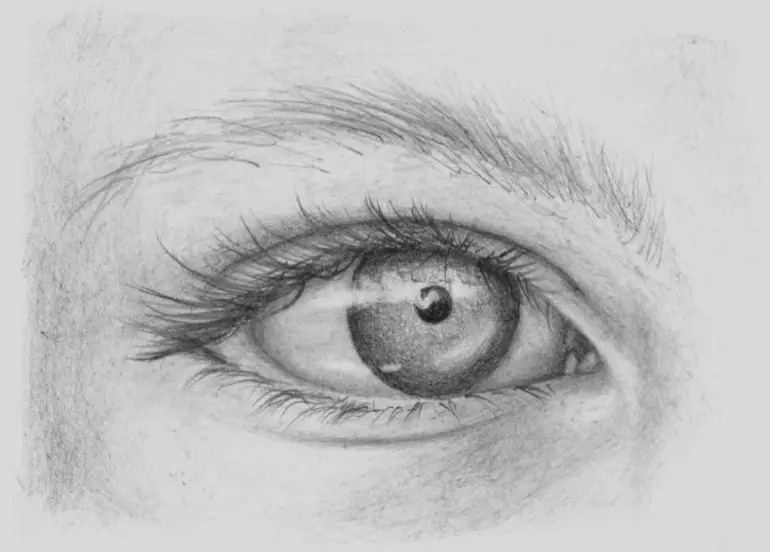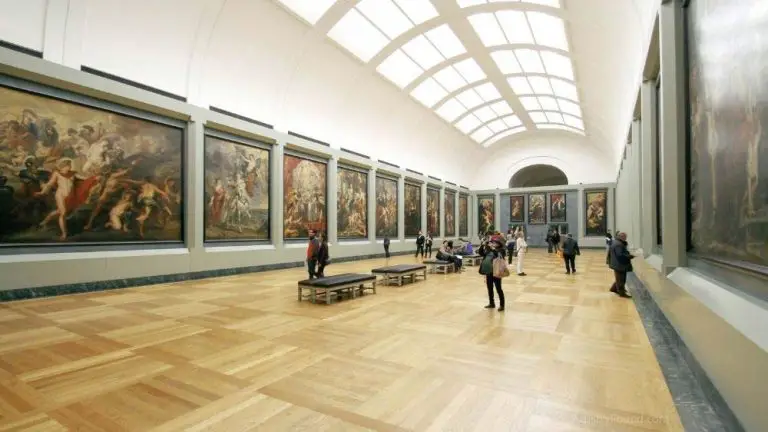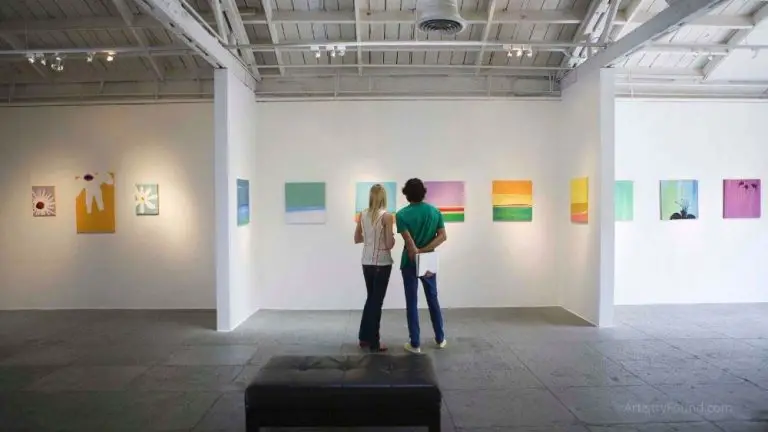Can you Buy Paintings from Museums? (Deaccession Explained)
Have you ever wondered if it’s possible to buy art directly from a museum? While acquiring a painting from an art museum by a private party is highly unlikely, it is possible. The process is called deaccession.
Deaccessioning is the selling of valuable artworks belonging to a museum’s permanent collection. It is a controversial practice and happens when a museum wants to refine its collection or manage its fiscal responsibilities. Artworks get auctioned at auction houses like Sotheby’s or Christie’s.
Deaccessioning varies according to the rules of different art museums. Typically deaccession occurs when museums plan to update their collection, remove damaged pieces or replica works, or acquire more valuable paintings.
Board members and trustees frequently prohibit deaccession if museum directors want to sell artworks to maintain their operating expenditures.
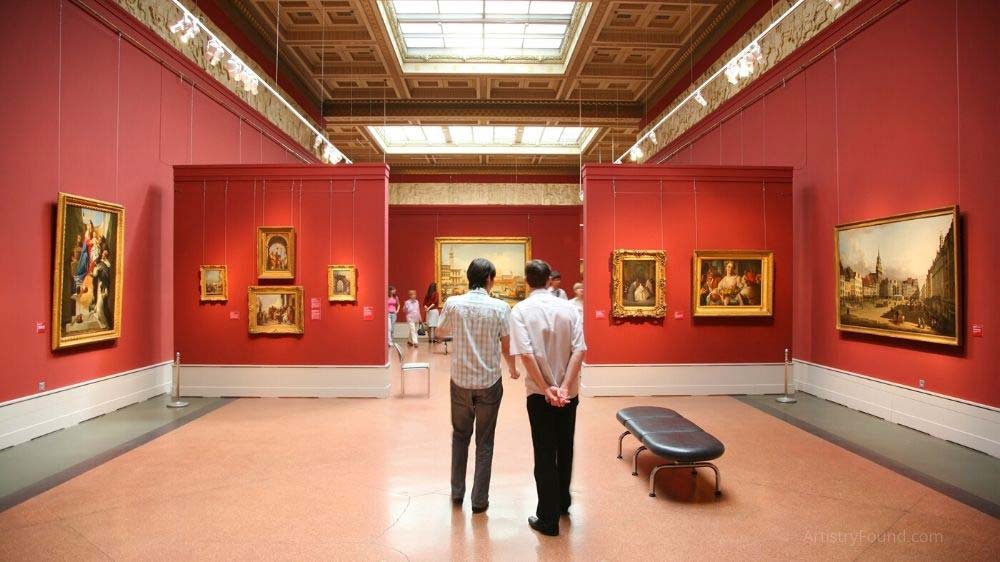
(This article may contain affiliate links and I may earn a commission if you make a purchase)
Can Museums Sell Their Exhibits?
Museums serve the public in pursuit of the preservation of culture and knowledge. However, the selling of paintings is universally considered an irreverent practice, and each museum has its own deaccession policy.
As repositories of artistic heritage, museums are generally reluctant to part with work from their established or permanent collections.
There are partitions within museums called galleries. Galleries are spaces that current artists can promote, display and sell their work. These works, however, are not owned by the museum.
Legally, there isn’t legislation in the United States prohibiting museums from selling their art. However, directors, art curators, and board members are generally unyielding in their attitude toward selling artworks.
For example, the American Alliance of Museums (AAM) and the Association of Art Museum Directors (AAMD) have mandated that paintings are not to be sold even in the event of monetary troubles.
During the Coronavirus pandemic, governments restricted access to art museums. The absence of visitor traffic in museums meant an immediate end to incoming funds. Therefore, the policies that determine the rules of deaccession needed revising.
Relaxing the Deaccession Policies
Michael O Hare, a professor of cultural policy at the University of California, made an eloquent argument for deaccession. He objected, “most big museums can’t show 90 percent of the objects they own – it’s all in storage,” and “what’s wrong with selling these objects to smaller museums or even private collectors, who are more likely to put them on display?” (source)
O Hare also proposed to the San Francisco Chronicle that institutions could offer long-lasting free exhibition admission to museum visitors through selling 1 percent (by value) of a museum’s collection and placing the resulting funds in endowment.
These perspectives opened the dialogue that may lead to the opportunity to acquire paintings from a museum’s permanent collection.
Non-negotiable standards are currently in place in the policies of the AAM and AAMD, but the sheer value of each piece belonging to a museum’s permanent collection can be staggering. The resulting profit of a sale allows a more straightforward strategy to assist the museum financially.
The federal tax code of the U.S. states that non-profit organizations, like museums, can regard their property as liquid assets. One of the reasons artworks from a permanent collection are so thoroughly protected is because it is near impossible to recover, and it is a loss of an asset.
From April 2020 to April 2022, the AAMD has made it official that museums may now “use the proceeds from deaccession works of art to support the direct care” of the museum’s operational costs. Operating expenses include staff salaries, curators, preservation of pieces, general repairs, possible expansions, and maintenance. This revision in policy is temporary; however, it could indirectly spur sales for overseeing expenses as a precedent in the future.
Sotheby’s and Christie’s Role as Auctioneers
In pre-pandemic times art auctioneers Sotheby’s and Christie’s worked hand in hand with museums. The roles of these two pillars of the art community included appraisals for insurance and indemnity functions, assistance in loans for exhibitions, managed benefit auctions, and, most importantly, bought and sold fine art in return for large commissions.
Sotheby and Christies are profiting from the dire current financial situations of many prominent art museums.
Due to the pandemic and the relaxing of policies, these two international auction houses are well compensated. The revision of the guidelines has seen numerous precious artworks sold.
Allison Whiting, the senior museum advisor to Christie’s, has stated that as of March 2020, she has witnessed a rise in sales to the tune of $100 million. Nina del Rio has managed sales to the figure of $63 million.
Whiting recalls the strategy that Christie’s employed after the announcement from AADM the first week of March 2020. She remembers that they reached out to over 1000 museums.
The level of contact was always personal to avoid the predatory nature that such a phone call could potentially hold.
There is a paradox that defines the process of deaccession and the auction. Museums have to publicly discuss the value of the paintings they are hoping to sell. To justify the sale, directors of art museums must openly reduce the perceived value of the artworks.
However, for artwork to garner the highest price, museums have to select noteworthy pieces and openly advertise the exceptional quality of each work.
The sales and commissions from the auction houses aren’t what many predicted over the past year. In reality, the sales have evened out, and records reveal that the prices have remained consistent (to a degree) with past auctions (pre-pandemic). Christie’s is currently double the sales of 2019, and Sotheby’s is roughly half.
When is Deaccession Acceptable in the United States?
In the past, deaccession was acceptable to either refine, update, or enhance a permanent collection. Deaccession enabled the stylized evolution of the museum. The Museum of Fine Arts (MFA) in Boston in 2011 traded eight pieces of its permanent collection to acquire only one painting.
The rationalization behind the exchange was that the MFA’s permanent collection consisted predominantly of impressionist pieces, and the new acquisition was considered an upgrade.
The paintings sold consisted of Monet, Pierre-Auguste Renoir, Paul Gaugin, Alfred Sisley, and Camille Pissarro. The exchange was to secure a piece from Gustave Caillebotte, his “Man at His Bath.”
Caillebotte is increasingly gaining relevance in the dynamic of the art milieu, and his compositions are rare.
The MFA impressionist collection is the largest globally and has a fair store of works gathering dust. The AAM and AAMD approved the artwork selling because of its practical application in elevating and promoting the museum.
In May 2018, at a Sotheby auction, the Baltimore Museum of Art (BMA) sold five of its renowned paintings for approximately $8 million. These were Andy Warhol’s 1978 – “Oxidation Painting,” Franz Kline’s 1956 – “Green Cross,” Jules Olitski’s 1973 – “Before Darkness 11,” and two from Kenneth Noland- “Lapis Lazuli” 1963 and “In-Vital” 1982.
The motivation behind BMA was to use the money to promote a more diverse group of upcoming contemporary art.
Included among these artists are Amy Sherald, Charles Gaines, Faith Ringgold, and Lynette Yiadom-Boakye. Ultimately, BMA felt it needed to represent the demographic of people in its immediate area. The BMA board of trustees, the AAM, and the AAMD, considered the deaccession justified.
The San Francisco Museum of Modern Art (SFMOMA), in 2019 sold artist Mark Rothko’s “Untitled, 1960” for $50.1 million. The sale intended to diversify its permanent collection by introducing under-represented artists.
According to Neal Benezra, the director of SFMOMA, this sale presented the opportunity to “enhance (the museum’s) contemporary holdings and address historical gaps.” The museum owns five Rothko paintings, including “No. 14, 1960” (widely considered his pièce de résistance).
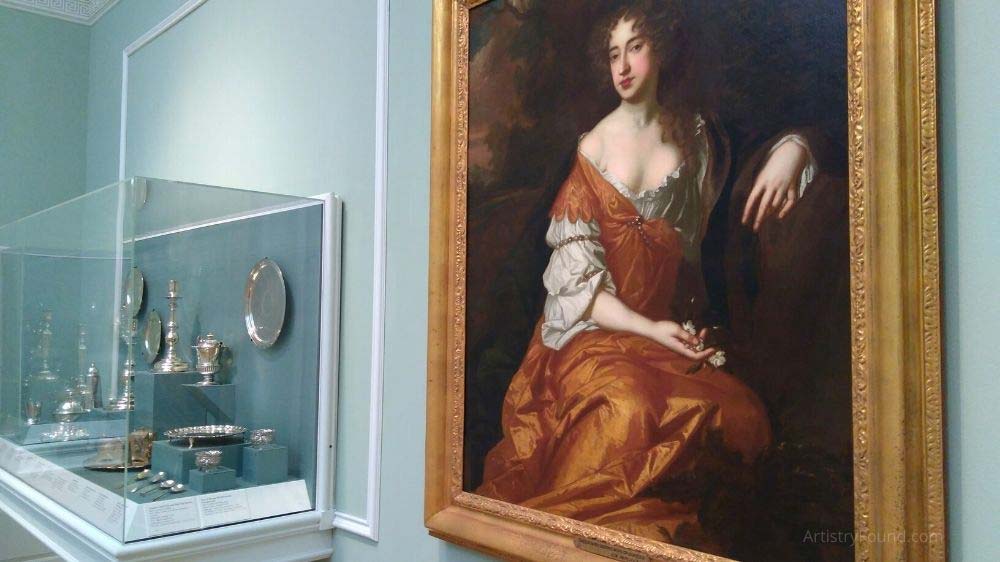
Important Paintings that have Recently Sold
As of late 2020, numerous valuable (rich in heritage, history, and collective renown) paintings were sent to Sotheby’s auction block. The intent behind deaccession is for the “direct care” of the museums across the country.
After relaxing the stringent policies in April 2020, the AAMD made known their increasing concern regarding the rising number of museums selling their permanent or established collections.
Museums including the Newark Museum of Art, the New York Historical Society, and the Brooklyn Museum are among the sweep of museums selling to gain profits to preserve their remaining collections and better balance the budget.
As of earlier this year, Childe Hassam’s 1918- “Flags on 57th Street, Winter” sold. This piece belonged to the New-York Historical Society. It was auctioned at Sotheby’s Impressionist and Modern Art Evening Sale and managed to procure $ 12,328,500.
Another of Hassam’s pieces, one “Woman Cutting Roses” (1888/89), was auctioned at Sotheby and secured $ 988,000. O’ Keefe’s 1923 “Green Oak Leaves” closed at $1,169,500. The Newark Art Museum auctioned a Giorgio de Chirico, 1928 “Cavallo e zebra in Riva al mare (Horse and Zebra by the Sea)” for $2,319,000.
On 6 October 2020, Jackson Pollock’s 1946 – “Red Composition” was sold to an anonymous buyer for $13 million. The money acquired will be used to enhance the diversity of the collection of the Everson Museum in Syracuse, New York.
After Pollock’s sale, the money bought various artworks, including Sherif Bey’s 2020 –”Protest Shield #2″, Multimedia exhibits from Ellen Blalock, Susan Frackleton, Courtney Leonard, and paintings from Dawn Williams Boyd and Ellen Lesperance.
What is Blue Chip Art?
Blue-chip art is a title given to signify the outstanding quality of the piece due to its widespread acknowledgment, exceptionally high estimated price, and the guaranteed investment potential recognized by the art market.
The recent deaccession of several blue-chip pieces by the BMA and the Brooklyn Museum has created such a furor that BMA withdrew its paintings at the last minute at Sotheby’s. These paintings included Andy Warhol, Clyfford Still, and Bryce Marden.
The Brooklyn Museum of Art secured $4.2 million in its sale of Lucas Cranach the Elder’s 1533 – “Lucretia.” Even though the AAM and AAMD scorn, the Brooklyn Museum is fixated on its goal to accrue $40 million, to sustain the museum’s care at $2 million annually through generated profits.
Selling Art in Europe
Two distinct approaches define Europe’s deaccession policy; Britain, Scandinavia, and German museums are similar in policy to the U.S., while France, Italy, and Spain’s heritage laws make public possession inalienable. These laws prohibit the sale of items.
David Hockney’s 1937- “Portrait of Sir David Webster” was sold at Christie’s Auction last October for £12,865,000. It is stated on Christie’s website that the Hockney piece sold to benefit the Royal Opera House (ROH).
The painting’s sale was realized in the immediate relief and remedy offered in maintaining operational costs of the ROH. According to the current director, Alex Beard, the ROH is enduring a current financial crisis that they have never experienced.
Michelangelo’s Tando Taddei is the only marble sculpture found in the United Kingdom; the piece holds a potential value of £100 million. Due to the severity of the financial crisis now facing the Royal Academy, this piece might have to face the auction block.
Unfortunately, the Royal Academy is confronting the decision of letting over 150 of its employees go. Auction block or chopping block?
Buying Art From a Museum Conclusion
Before the financial ruin of art museums due to the recent pandemic, it was near impossible to even think about procuring a piece of art from a museum’s permanent collection.
In the USA, the procurement of art is not prohibited through legislation. Still, it appears to be heavily regulated in the American Alliance of Museums (AAM) and the Association of Art Museum Directors (AAMD) policies.
There are numerous apparent reasons as to why collections are so tightly protected. There is very little hope of the pieces being returned; they are exhibited for the benefit of society, and they hold excellent estimate value as assets.
Museums are obliged to the community; deaccession for liquid funds would generate bad publicity.
Before the financial difficulty resulting from the virus, the policy of deaccession, selling off artworks from a museum’s established collection, was practiced solely to refine, enhance and clear away duplicate or ruined pieces.
If then you were interested in buying art, you had to align your interests with the directors of the museums.
As of April 2020, the AAM and AAMD have relaxed their previously stringent policies, realizing the necessity of maintaining the operational costs of maintaining, preserving, and servicing the museums.
Therefore, more directors auction off their prized pieces from their permanent collections to keep renovating the space allotted to their museums—consequently, auction houses like Sotheby’s and Christie’s stand to gain in commission.
Deaccession was in practice before the new addition to the mandates of the AAM and the AAMD. Frequently, excellent works of art were auctioned to expand the collection, exhibiting unrecognized artists that offer new dimensions and fresh insights from the previously unacknowledged cultural heritage of different demographics.
This is not without controversy; however, the directors who engage in deaccession have stated that it’s for reasons to secure the evolution of their collections. The quality of items under auction is beyond high.
Yet the amount of money gained makes the sale worth it. Many museums are in a severe state of financial difficulty in which directors are wholly unfamiliar. Even the board members can’t offer assured advice or strategies to protect their museums’ hallowed ground.
Therefore, channeling money back into the care of museums from sales of exceptional pieces feels like common sense.


